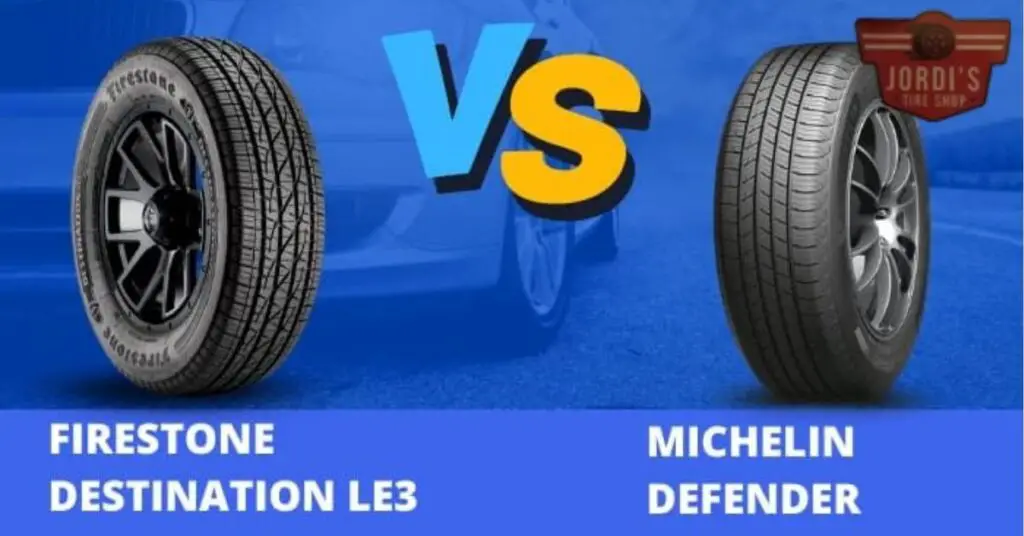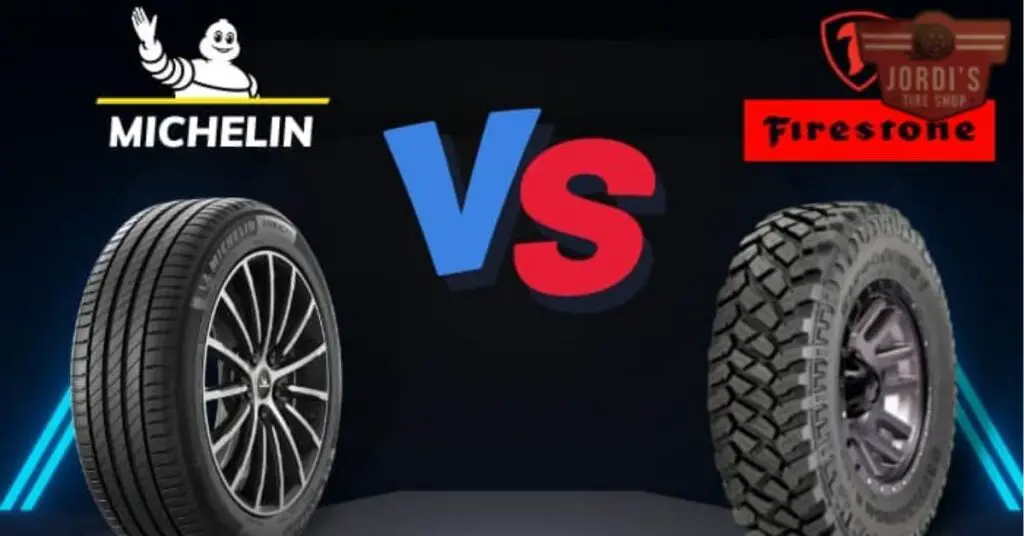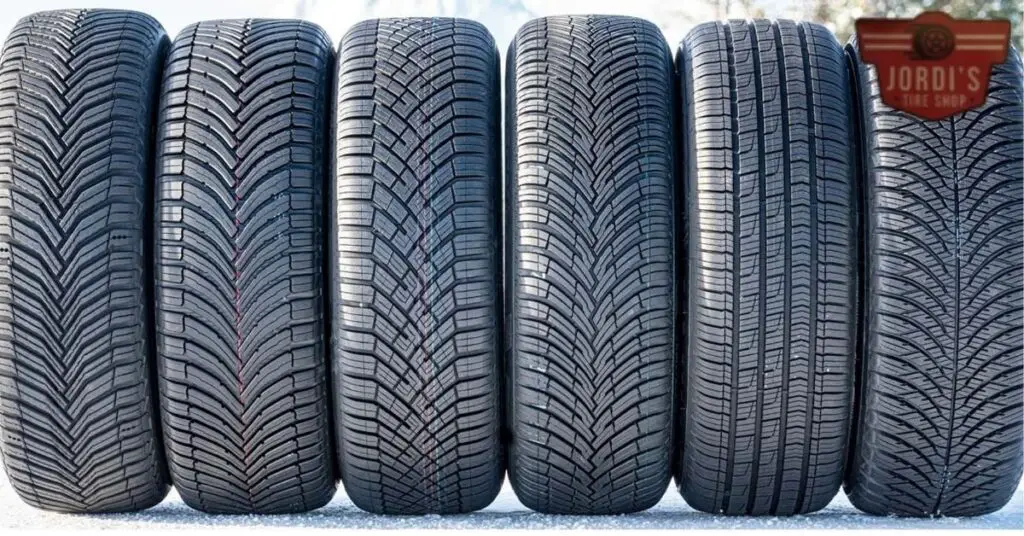Choosing the right tires for your vehicle can be a daunting task, especially when you’re torn between two top contenders like Firestone and Michelin. Both brands offer high-quality all-season highway tires, but how do you decide which one is worth your hard-earned money? The Michelin Defender LTX and the Firestone Destination LE3 are often compared, and for good reason.
While the Michelin Defender LTX comes with a higher price tag—$187 more out the door—the Firestone Destination LE3 currently holds a higher rating on Tire Rack, outperforming Michelin in six out of seven categories. When it comes to essential factors like dry and wet traction, ride comfort, and noise levels, you want to make sure you’re getting the best value for your investment. So, are the Michelins really worth the extra cost, or do the Firestones offer better overall performance? Let’s dive in and find out.
Overview of Firestone and Michelin Tires

Firestone and Michelin are among the most respected tire manufacturers globally. They offer a broad range of tires to meet various driving needs and conditions.
Key Features of Firestone Tires
Firestone provides quality tires with competitive pricing. Known for good performance in various categories, a few Firestone models stand out.
- Firestone FS561: Offers high quality at a lower price compared to Michelin and Bridgestone, making it an economical choice.
- Firestone Destinations: Delivers good initial performance; however, users have reported decreased efficacy in wet conditions for newer models.
- Firestone Weathergrip: Functions well as an all-weather tire, suitable for use throughout the year.
- Firestone Destination LE3: This model excels in various categories such as dry and wet traction, ride comfort, and noise, surpassing Michelin in several tests according to Tire Rack ratings.
Key Features of Michelin Tires
Michelin is renowned for its premium tire quality and innovation. Despite higher costs, Michelin tires are designed for durability and high performance.
- Michelin Defender LTX: Known for longevity and fuel efficiency, and acclaimed for excellent traction and handling.
- Michelin Pilot Sport 4S: A high-performance tire favored for sports cars, offering superior grip and stability.
- Michelin X-Ice Xi3: Designed for winter conditions, providing excellent performance on snow and ice.
- Michelin Primacy MXV4: An all-season tire recognized for comfort, quiet operation, and reliable performance across various road conditions.
Performance Comparison

Firestone and Michelin are reputable brands offering distinct tire options for different driving conditions and preferences. Below, you’ll find a detailed comparison of their performance focusing on road traction, control, durability, and wear.
Road Traction and Control
Firestone offers impressive road traction and control, particularly in their Destination LE3 line, which outperforms Michelin’s Defender LTX in both dry and wet conditions according to Tire Rack ratings. You’ll find that Firestone’s WeatherGrip and General’s Altimax Arctic 12 are reliable and cost-effective winter tire choices. Meanwhile, Michelin’s CrossClimate 2 serves as a high-performing all-season option, offering excellent traction even in winter. For high-performance needs, Firestone’s Firehawk Indy500 provides ultra-high performance, while Michelin delivers maximum-performance alternatives.
Durability and Wear
Firestone tires exhibit strong durability and wear characteristics. Firestone’s Destination LE3 and WeatherGrip models both show extended tread life, making them excellent for long-term use. On the other hand, Michelin is renowned for its premium quality, often reflected in longer-lasting tread life and higher mileage, despite the higher cost. Michelin’s Defender LTX and Pilot Sport 4S models embody this durability, catering to those who seek solid, long-term performance.
Price and Value Analysis

When choosing between Firestone and Michelin tires, understanding their price and value can help you make an informed decision.
Cost Comparison
Michelin tires typically cost more than Firestone tires. For instance, Michelin Defenders cost approximately $120 more per tire than Firestone tires in the size 225/70R19.5. Additionally, the total cost for Michelin Defenders is $187 more than Firestone Destination LE3 tires.
| Tire Brand (Model) | Size 225/70R19.5 Price | Total Cost Difference |
|---|---|---|
| Michelin Defenders | $120 more | $187 more |
| Firestone Destination LE3 | Baseline Price | Baseline Price |
Long-Term Value
Firestone tires can last up to 96,000 miles without significant issues, offering good value for their price. However, newer Firestone models may not perform as well as older ones, which could impact their value. Michelin Defenders are praised for excellent performance in dry, wet, and snowy conditions, justifying their higher cost for many users.
User Reviews and Feedback

User reviews for Firestone and Michelin tires show varied experiences, highlighting differences in satisfaction and common complaints under different conditions.
Satisfaction Levels
Firestone Destination LE3 users have reported mixed satisfaction levels. Some users have praised the older Firestone Destination models for lasting over 96,000 miles without major issues. However, other users have described newer models as performing poorly in wet conditions, feeling sloppy, and not holding the road well.
In contrast, Michelin Defender LTX users often express high satisfaction. Users report significant improvements in performance after switching from other brands, particularly noting excellent traction in dry, wet, and snowy conditions. Despite Michelin tires generally being more expensive, many users feel the superior performance and reliability justify the cost.
Common Complaints
Firestone tires face common complaints about inconsistent quality. Older models like the Firestone Destination LE3 have received positive feedback for durability, but newer models have been criticized for reduced performance in adverse weather, particularly rain. Additionally, some users report dissatisfaction with Firestone’s customer service, experiencing delays and complications when seeking warranty support.
Michelin tires, while highly rated for performance, are not free from issues. Some users have struggled with recalls, although Michelin has been honoring them effectively. Despite occasional recall-related issues, Michelin users rarely report performance-related complaints, with the primary criticism being the higher price point compared to other brands.
Conclusion
When deciding between Firestone and Michelin tires, consider your driving needs and budget. Firestone offers solid traction and control at a more affordable price, making it a great value for everyday driving. However, be cautious of potential quality inconsistencies and wet weather performance issues.
On the other hand, Michelin tires come with a higher price tag but deliver reliable performance across various conditions. They are generally well-regarded and offer peace of mind despite occasional recall concerns.
Ultimately, your choice will depend on what you prioritize most: cost-effectiveness or premium performance.
Related Posts:
- Yokohama vs Hankook Tires: Performance, Durability, and Pricing Compared
- Yokohama vs Goodyear Tires: Performance, Durability, and Eco-Friendliness Compared
- Yokohama vs Bridgestone: Which All-Terrain Tire Reigns Supreme?
- Nitto vs Michelin Tires: Which Brand is Best for Your Driving Needs?
- Falken vs Michelin Tires: Which Brand Offers Better Performance and Value for Money?
- BFGoodrich vs Michelin: Which Tire Brand is Best for Your Vehicle?
- Goodyear vs Michelin: Which Tire Brand is Best for Your Vehicle?
- Michelin vs Pirelli Tires: Which Brand is Best for Your Car?
- Firestone vs Michelin Tires: A Detailed Comparison of Performance and Value
- Toyo vs Michelin Tires: Which Brand Offers the Best Performance and Value?
- Hankook vs Michelin Tires: Which Brand Offers the Best Performance and Value?
- Goodyear vs Bridgestone Tires: In-Depth Comparison of Performance, Durability, and Customer Reviews
- Continental vs Pirelli Tires: A Comprehensive Comparison of Performance and Value
- Continental vs Bridgestone Tires: Which Brand Offers Better Performance and Durability?





